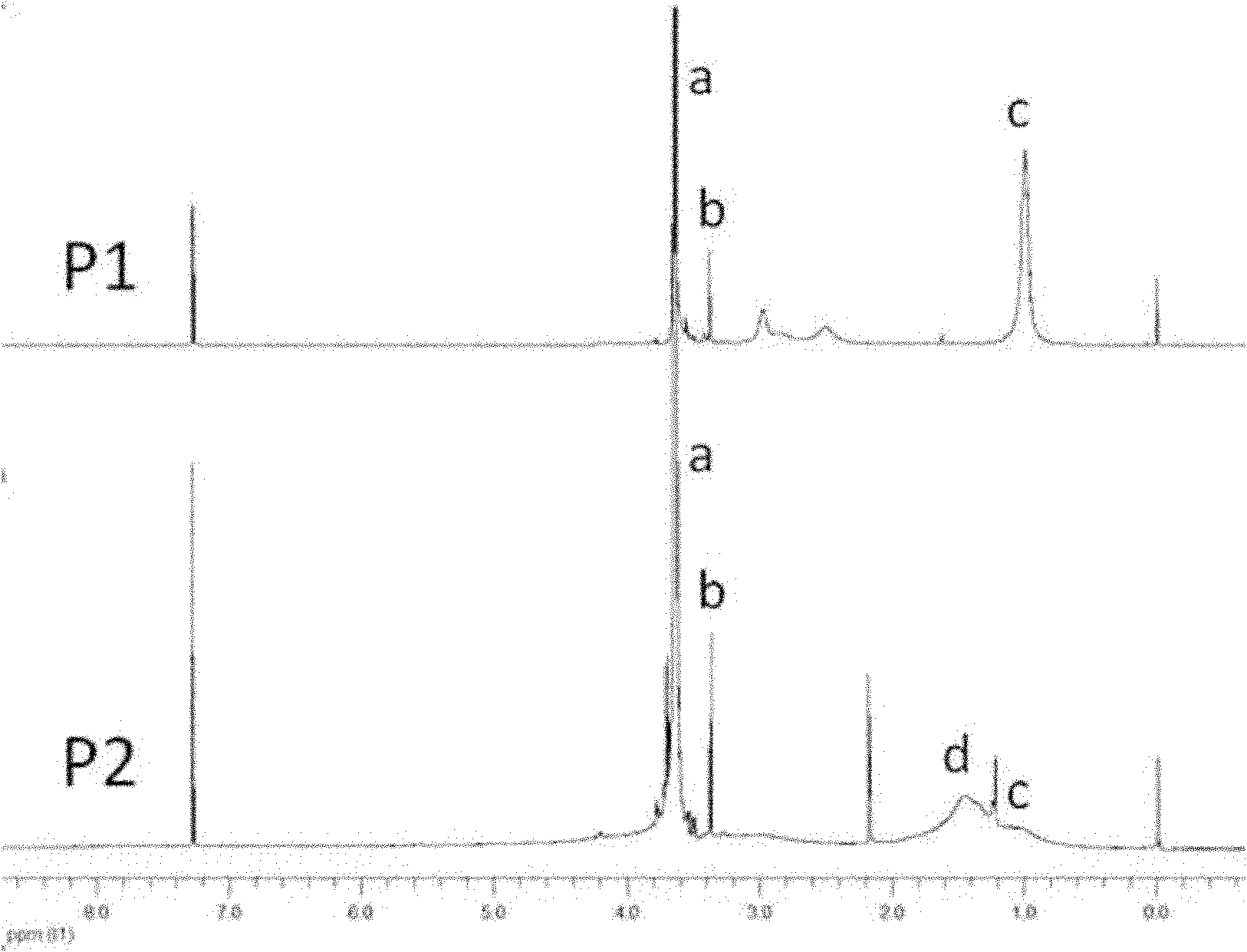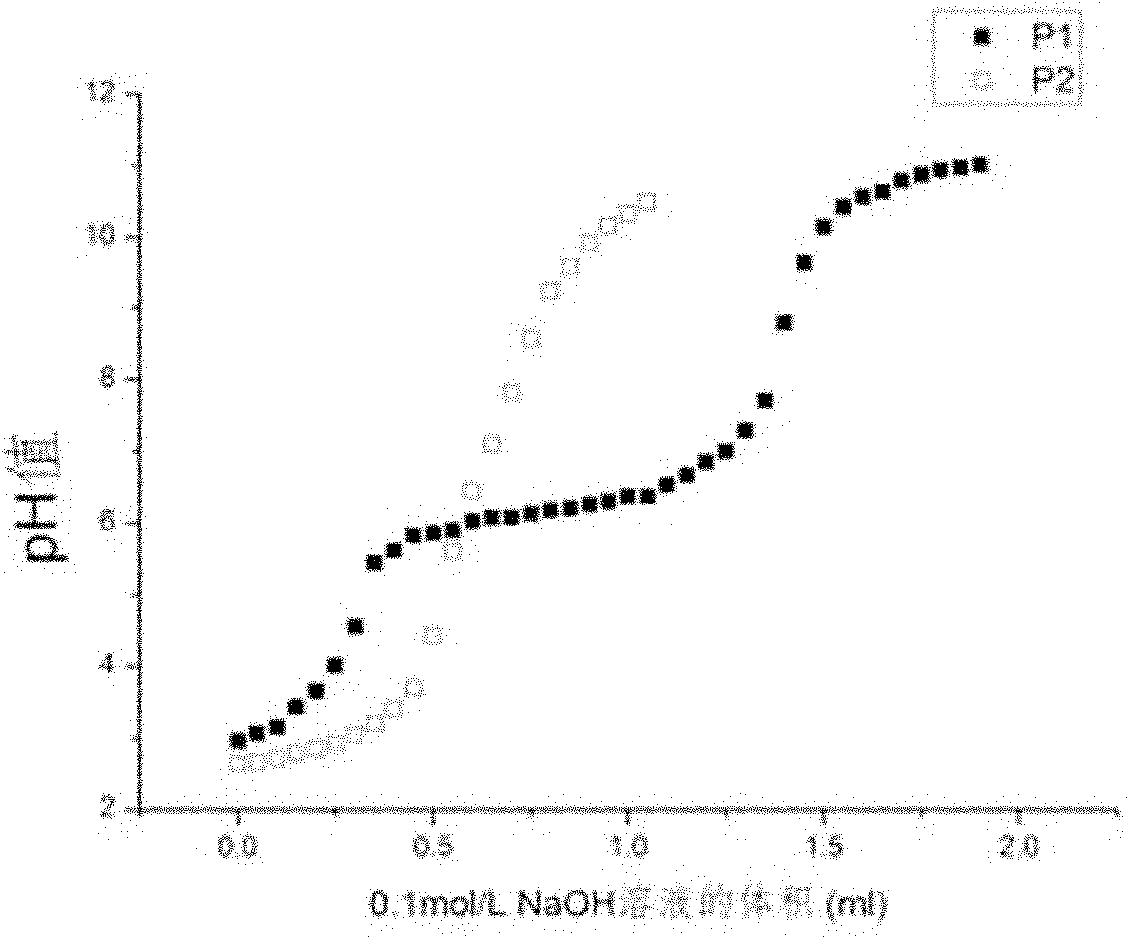Application of pH sensitive type amphiphilic graft polyphosphazene for preparing administration vesicle
A polyphosphazene and drug delivery technology, applied in pharmaceutical formulations, antitumor drugs, drug combinations, etc., can solve problems such as harsh conditions and medical application limitations, and achieve easy storage, high drug loading and encapsulation efficiency, and application. handy effect
- Summary
- Abstract
- Description
- Claims
- Application Information
AI Technical Summary
Problems solved by technology
Method used
Image
Examples
Embodiment 1p
[0058] Example 1 pH-responsive amphiphilic grafted polyphosphazene synthesis method
[0059] (1) Prepare poly(dichlorophosphazene) with aluminum chloride as catalyst
[0060] Weigh 4 g of chlorophosphazene cyclic trimer purified by sublimation and 0.2 g of anhydrous aluminum trichloride into a pre-cleaned and dried polymerization tube, vacuumize and seal the tube, carry out the polymerization reaction at 250°C for 5 hours, and wait for When the viscosity of the reactant remained almost constant, the polymerization was stopped and the polymerization tube was taken out to cool. Unseal the polymerization tube, add an appropriate amount of dry toluene solution to dissolve the reactants. After dissolution, it was precipitated with petroleum ether and dried in vacuum to obtain a white elastomer, that is, poly(dichlorophosphazene).
[0061] (2) Synthesis of pH-responsive amphiphilic grafted polyphosphazene copolymers via stepwise nucleophilic substitution reactions
[0062] Dissol...
Embodiment 2p
[0065] Example 2 pH-responsive amphiphilic grafted polyphosphazene synthesis method
[0066] (1) The preparation of poly(dichlorophosphazene) is the same as in Example 1.
[0067] (2) In addition to slowly adding 3.4g NH 2 50ml of THF solution containing PEG (molecular weight is 2000) and 0.23ml TEA, 10ml of THF solution containing 0.35g N,N-diisopropylethylenediamine (DPA) and 0.3ml TEA, and 3.0g ethyl p-aminobenzoate Except for 10 milliliters of THF solution of ester (EAB) and 2.5 ml TEA, all the other operations were the same as step (2) in Example 1 to obtain pH-responsive amphiphilic grafted polyphosphazene copolymer P2.
[0068] In the copolymer P2, the mass percentage of the first grafting group, that is, the amino-terminated polyethylene glycol of the hydrophilic segment, is 48%, and the second grafting group, that is, N-[2-(N', N'-two Isopropylamino) ethyl] the mass percentage of amino is 5%, and the mass percentage of N-(benzoic acid ethyl group)-4-amino is 41% in ...
Embodiment 3
[0069] Example 3 Preparation of administration vesicles
[0070] (1) Preparation and characterization of P1 polymer drug-loaded vesicles
[0071]Dissolve 30 mg of the pH-responsive amphiphilic graft polyphosphazene copolymer P1 prepared in Example 1 in 5 ml of N,N-dimethylformamide together with 6 mg of doxorubicin, and stir at a speed of 0.3 ml / min under magnetic stirring 5ml of pure water was slowly added dropwise therein, and the obtained solution was loaded into a dialysis bag with a molecular weight cut-off of 14000 Da, dialyzed in pure water for two days to remove N, N-dimethylformamide, and then filtered with a 0.45 μm filter membrane to obtain a clear solution that was It is an aqueous dispersion of pH-responsive amphiphilic grafted polyphosphazene doxorubicin administration vesicles (P1-DOX).
[0072] The above aqueous dispersion is freeze-dried to obtain a pH-responsive polyphosphazene-loaded doxorubicin vesicle freeze-dried powder.
[0073] The particle size of th...
PUM
| Property | Measurement | Unit |
|---|---|---|
| particle diameter | aaaaa | aaaaa |
| concentration | aaaaa | aaaaa |
| size | aaaaa | aaaaa |
Abstract
Description
Claims
Application Information
 Login to View More
Login to View More - R&D
- Intellectual Property
- Life Sciences
- Materials
- Tech Scout
- Unparalleled Data Quality
- Higher Quality Content
- 60% Fewer Hallucinations
Browse by: Latest US Patents, China's latest patents, Technical Efficacy Thesaurus, Application Domain, Technology Topic, Popular Technical Reports.
© 2025 PatSnap. All rights reserved.Legal|Privacy policy|Modern Slavery Act Transparency Statement|Sitemap|About US| Contact US: help@patsnap.com



